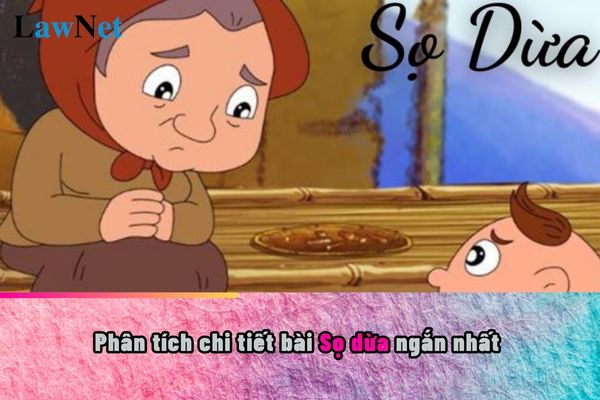What are guidelines on writing an essay on analysis of the story "Sọ dừa" for students in Vietnam? What is the age of grade 6 students in 2024 in Vietnam?
What are guidelines on writing an essay on analysis of the story "Sọ dừa" for students in Vietnam?
The folk tale "Sọ dừa" is one of the stories that grade 6 students will study.
Grade 6 students can refer to the detailed analysis of "Sọ dừa" below:
|
Detailed Analysis of "Sọ dừa" * Plot and Significance: |
Note: The information about the analysis of "Sọ dừa" is for reference only./.

What are guidelines on writing an essay on analysis of the story "Sọ dừa" for students in Vietnam? What is the age of grade 6 students in 2024 in Vietnam? (Image from the Internet)
What is the age of grade 6 students in 2024 in Vietnam?
According to Article 33 of the Charter for lower secondary schools, upper secondary schools, and schools with multiple educational levels issued with Circular 32/2020/TT-BGDDT, the age regulations for lower secondary school students are as follows:
Age of lower secondary school students
1. The age of students entering grade 6 is 11 years old. The age of students entering grade 10 is 15 years old. For students who have advanced classes in previous education levels or start education at an older age than the regulated one, the age for entering grade 6 and grade 10 can be respectively reduced or increased based on the year they graduated from the previous educational level.
2. Students who are ethnic minorities, students with disabilities, students in particularly difficult circumstances, or students returning from abroad can enter education levels up to 3 years older than the regulated age.
.....
Thus, according to the regulations, the age of grade 6 students in 2024 is 11 years old. This age can be adjusted upward or downward depending on the year of graduation from the previous education level for students who advanced classes in the earlier education level or started at a higher age.
Particularly for students in the following cases, they may attend grade 6 at an age higher than the regulated one by up to 3 years:
- Students of ethnic minorities.
- Students with disabilities.
- Students in particularly difficult circumstances.
- Students returning from abroad.
What are the rights of grade 6 students when attending school in Vietnam?
The rights of lower and upper secondary school students are specifically prescribed in Article 35 of the Charter issued with Circular 32/2020/TT-BGDDT:
- To be treated equally in receiving comprehensive education, ensured conditions of time, facilities, hygiene, and safety to study in class and self-study at home, provided information about their study and training, and usage of equipment and means for school learning, cultural activities, sports according to the regulations.
- To be respected and protected, equally and democratically treated, to have the right to complain to the school and educational management authorities about decisions concerning themselves; to have the right to transfer schools for legitimate reasons following current regulations; to study earlier, skip grades, and study at an older age than prescribed according to Article 33 of the Charter issued with Circular 32/2020/TT-BGDDT.
- To participate in activities to develop talents in subjects, sports, and arts organized by the school if eligible.
- To receive scholarships or other allowances as prescribed for students who are beneficiaries of social policies, students with life difficulties, and students with special abilities.
- To transfer schools if meeting conditions as prescribed; the school transfer procedures are completed according to the regulations of the Minister of Education and Training.
- To enjoy other rights as prescribed by law.

